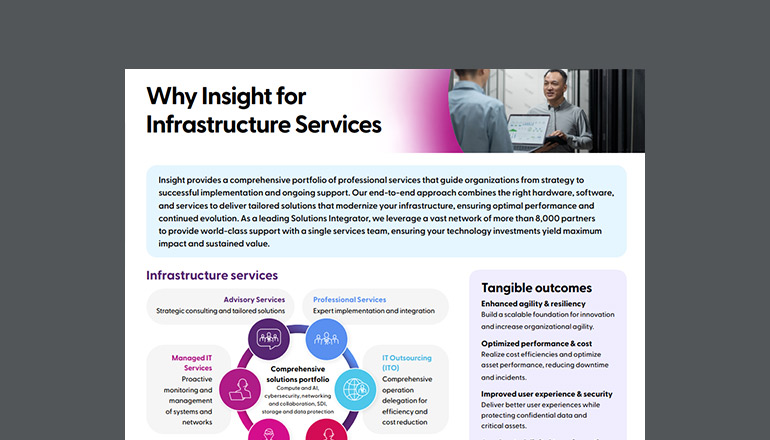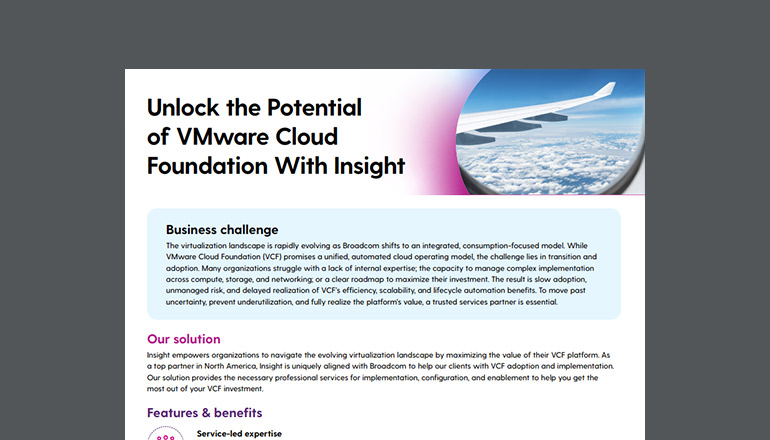Glossary What is Data Migration?
By / 2 Jan 2023 / Topics: Artificial Intelligence (AI) Data center Modern infrastructure
Data migration is the process of safely exporting data from one storage source and transferring it to another storage system. The process involves selecting, preparing, exporting and converting the data securely, efficiently and completely.
Why is data migration necessary?
Many companies choose to migrate data as existing platforms age or when they need better performance. As legacy systems get older, the reliability, speed and security decreases, ultimately impacting a business’s productivity, risk and maintenance cost.
What are the steps in a data migration?
A data migration can involve structured or unstructured data and various versions of applications, making it important to execute a migration in a specific order. A typical data migration involves:
- Analyzing existing data types, locations and interdependencies
- Aligning data to a best-fit destination
- Upgrading destination systems to optimal version levels
- Re-platforming, modifying, rewriting or retiring data
- Migrating data to new systems
- Testing systems to ensure data is functional
What are the types of data migrations?
Data can be moved from multiple sources, including a storage solution, infrastructure platform or application. This IT event typically occurs when an organization is upgrading its IT infrastructure. Here’s a breakdown of the destinations of a data migration:
- Flash storage arrays
- Cloud platform
- Converged infrastructure
- Hyperconverged infrastructure
- Traditional on-premises data center
Workload alignment
Data is part of a workload — the IT resources your infrastructure uses — when paired with an application. A data migration must consider how the workloads will operate in the chosen platform. Data and workloads have unique requirements, and certain storage and infrastructure platforms can play to different strengths depending on the desired use.
An end-to-end IT partner can work with a business through each step of a data migration, including choosing the right platform. Organizations create a streamlined, automated and secure environment when data and the accompanying workload are aligned to best-fit platforms.
Getting started
An effective migration will involve organization-wide feedback and support — from executive leadership to end users. If you don’t have to meet a strict deadline, it’s best to start small with a proof of concept or pilot launch before scaling your migration.
Upon completion, IT and end-user training will ensure everyone understands how to use the data and workloads in the new infrastructure environments. Successful migrations can be complicated endeavors, but a well-planned approach will align IT to business needs.
The Value of an Experienced Data Migration Partner
Many IT organizations take on data migration projects themselves, only to soon realize that they should have used outside help from the beginning. Moving business-critical data has the potential to cause serious disruption to the organization and requires significant planning to alleviate risk. Data migration includes the obvious ones such as storage, server and application migrations. However, less frequent and more complicated migrations like core network migrations, as well as data center migrations and consolidations can also benefit from using the same methodology and process associated with data migrations. In addition, data migrations are something that IT does not do every day. They require a formalized process — a methodology — which does not fall into the core competency of many IT organizations.
Here are three top reasons for using outside expertise to help with data migrations projects:
1. Planning is everything
“If you fail to plan, you are planning to fail!”― Benjamin Franklin
It is hard to get cross-functional teams to collaborate and plan the details for a data migration. Often, a data migration requires the involvement of application, server, storage, virtualization and backup teams. Although it’s not difficult to get them to work together, to have this team collaborate, come up with an overarching plan and a backup plan, and execute on these plans within a tight timeline can be quite daunting, given that they are already busy with other business-critical projects.
2. Time is of the essence
Data migration projects, by nature, are complex. When an application is migrated, all compute, storage, virtualization and networking components of the application are moved as well to ensure that there is no downtime for the application. This requires touching each element of the infrastructure and application layers.
There will always be something that goes wrong – it’s not a question of “if” but a question of “when.” When things do not go as intended, it’s very important to still complete the migration and execute on it. Otherwise, you risk longer application downtimes and an adverse impact to the business. Data migration is 70% planning and 30% execution.
A trusted partner can alleviate your risk from the very beginning, making the migration as smooth as possible, versus coming in midway trying to figure out what’s gone wrong, taking twice as long to complete.
3. Maximize the business value of IT
A question that every IT leader needs to ask themselves is whether IT is serving the business as a strategic partner. If you think about, it’s easy to see that IT is not serving the business in a high-value capacity when consumed with the administrative details of a data migration. Yes, data migration is a necessary step to ensuring that IT teams function properly, but data migration is in itself, a task that could easily be offloaded to a partner with a mature migration practice to ensure the associated risks associated are minimized and the migration itself is completed smoothly.




